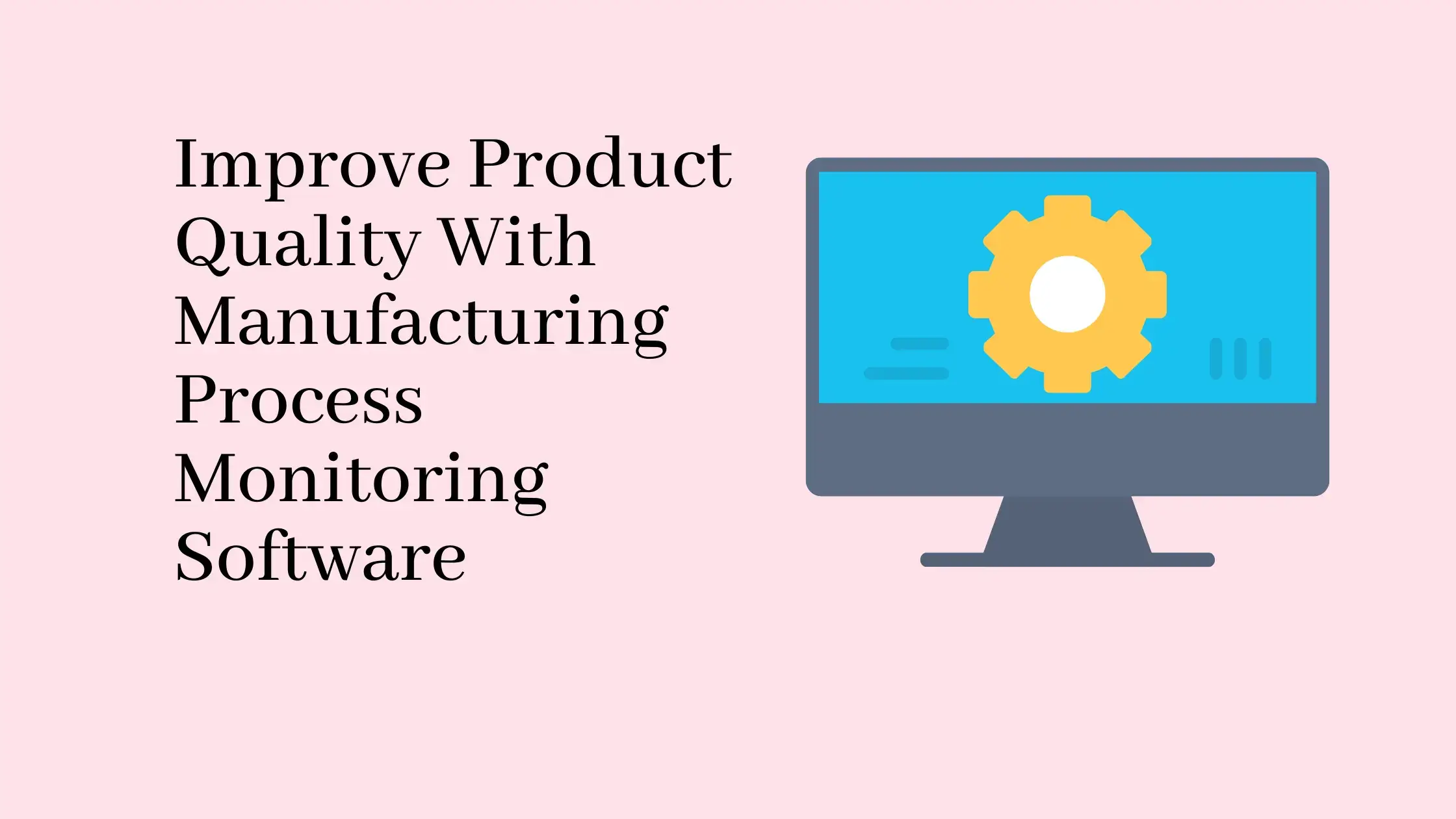Why Quality, Production, and Process Monitoring is the Core of MES (Manufacturing Execution System)?
It depends on the person’s perspective of MES or Manufacturing Process Monitoring Software. Do they come from discrete or process manufacturing backgrounds? Do they focus on highly repetitive or complex manufacturing? Are they focused on automation or monitoring, measuring, and alerting?
This article deals with production monitoring systems, manufacturing monitoring systems, manufacturing process monitoring software, and industrial monitoring software.

There are many categories of MES.
MES monitoring can be divided into three types:
- Production Monitoring: This is determining how fast parts are produced.
- Quality Monitoring: This is the process of evaluating the quality of parts after they have been manufactured. They are usually measured in their appearance, weight, and dimensions.
- Process monitoring is the measurement of process variables during manufacturing. Parameters such as temperature, pressure, and hold time.
- Each type of monitoring produces actionable information, which can be used with other monitoring results. Production monitoring can be used to inform production management.
- Either the machine is still running or producing parts, or it has stopped.
- When the job is expected to be completed
- If your job is moving too slowly or too quickly (and there is a problem),
- What parts have been produced, and how many are still to be made?
- Simply by actively measuring the production rate in real-time, you can generate much information that can be renewed into the ERP system.
The development of Manufacturing Execution Software (MES) is statistically influencing industry 4.0. At our company, we monitor and synchronize real-time physical processes in manufacturing intermediate and final goods.
What quantity of finished goods is available, and when will they become available
What raw material was used, and how much will be needed?
What was the labor and machine time required to make the parts?
When will the machine become available for the next job?
The best software product development is to ensure quality monitoring. Computer measurement devices, e.g., Scales, calipers, and vision systems are combined with a human inspection to ensure that the parts meet specifications. Good parts are marked with a “Good” sign, bad parts are removed, and not-working processes are flagged.
Production monitoring provides information that can be used to build quality monitoring. Further detailing:
Scrap rates – Material, labor, and time wasted
- Processes that are out of control or failing
- Customers will be able to verify that the parts comply with specifications.
The process monitoring monitors what happens during actual production.
Did the raw material reach the correct temperature? Was the die closed with enough force? And was the part properly baked?
The key process variables are continuously monitored for deviations in a time-series format. The prediction of bad parts by identifying events trending toward the boundary limits.
Process monitoring is essential to find the root causes of manufacturing problems. Is the part too small? Did the fill time suffice? Why were there air bubbles in part? Is the screw pressure too high? Engineers can quickly identify potential issues during production by knowing the critical process variables. This action allows them to conduct root cause analysis.
How to monitor production to ensure predictability and efficiency on the plant floor?
When production, quality, and process monitoring are combined, it can provide great manufacturing control, predictability, and quality.
Take the following example. Production monitoring tracks the progress of a job with 10,000 items. Production monitoring informs the supervisor when there are 6,000 parts left to produce. The job has not been completed on schedule, and the production rate has slowed. The supervisor also receives an alert from quality monitoring, informing him that it rejects one of every twenty parts.
The supervisor calls an engineer to review the process monitoring data. The machine’s barrel temperature increases to unacceptable levels while the fill pressure is within the desired range. The engineer and the supervisor agree that the job should be stopped and restarted using a different piece. To ensure application maintenance and for best quality control (sometimes known as Runs Best Data) to determine which machine is the best to replace the job. The engineer knew the problem was not with the fill pressure and advised production management that it was the tool, not the machine. The engineer authorizes using the tool on the equipment, and the supervisor initiates a changeover. Within 30 minutes, the job is done, and all parameters are in line with the specifications.
The engineer simultaneously reviews production data, quality data, and process data. The engineer quickly discovered that the barrel temperature exceeded 950 degrees within one minute. This act causes a slowdown in production and an increase in rejected parts. The barrel temperature was the root cause. Inspection of the machines revealed that the barrel temperature controls had failed prematurely at 425,000 cycles. The machine was repaired, and the inspection criteria for barrel temperature control were reset to 400,000 cycles. To succeed with MES, research the following such as 3D Printing Technology, 3D Printing Industry, 3D Printing Products, 3D Printing Software, Deeper Insight, Industry Insights, and Automotive Companies.MES allows the best application maintenance, visibility, and control over production rates, quality, and cost
Consider the importance of Production-Monitoring Companies, Downtime codes, and Manufacturing Downtime. Consider the importance of the Advantages Of Feature-Based, Plant Floor Layout, Multivariate Data Analysis, Advanced Signature Analysis, Customizable Charts, and Tool Maintenance.
Remember the following:
- Maintenance Guy
- Market Size
- Market Opportunities
Include in your software Active Dashboard and Real-Time Dashboards.
Conclusion
MES is a central component of production, quality, and process monitoring. They enable production automation, visibility, and control over production rates, quality, and cost. Manufacturers of all sizes and complexity use MES to increase productivity and deliver top-quality products on time to their customers.
FAQS
How do Manufacturers Benefit from Process Monitoring?
Process monitoring automatically monitors activities and processes, improving manufacturers’ quality and operational efficiency. This improves accuracy on the factory floor and reduces human-interaction errors.
What is the bottom line regarding this monitoring process?
Manufacturers achieve superior quality and lower costs by reducing defects, rejects, and product returns. They also deploy actionable intelligence to control the processes better and avoid costly problems. Your team can use process monitoring to predict and stay ahead of any exceptions. Your shop floor will be more efficient using resources for predictive capabilities built into next-level data analytics.

Dr.Supreena has published two international books in finance with the able guidance of her guide and department at Ethiraj College of Women, University of Madras during her PhD in Economics and Finance. She is the Recipient of Dr Vedagiri Shanmugasundaram (An Oxford Scholar) Award for Outstanding and Successful PhD Candidate from Ethiraj College for Women concerning research record and academic distinction. She is experienced in the domain of finance, digital marketing and information technology writing on Artificial Intelligence, IoT, PaaS and SaaS cloud computing etc. She is NIIT qualified in Advanced Network Computing, Google Certified in digital marketing. Her hobbies to maintain balance and reduce stress are gardening and cooking.


